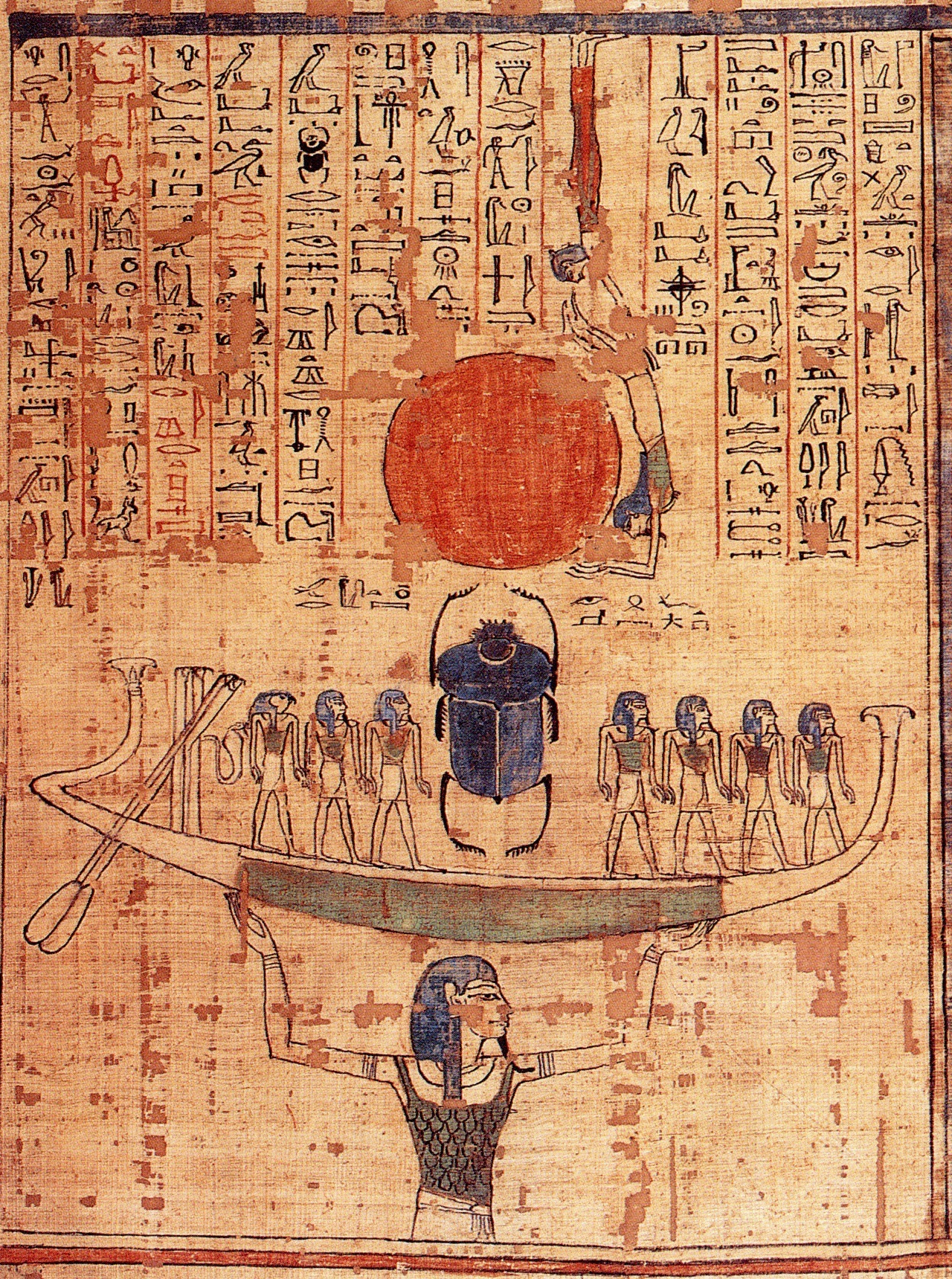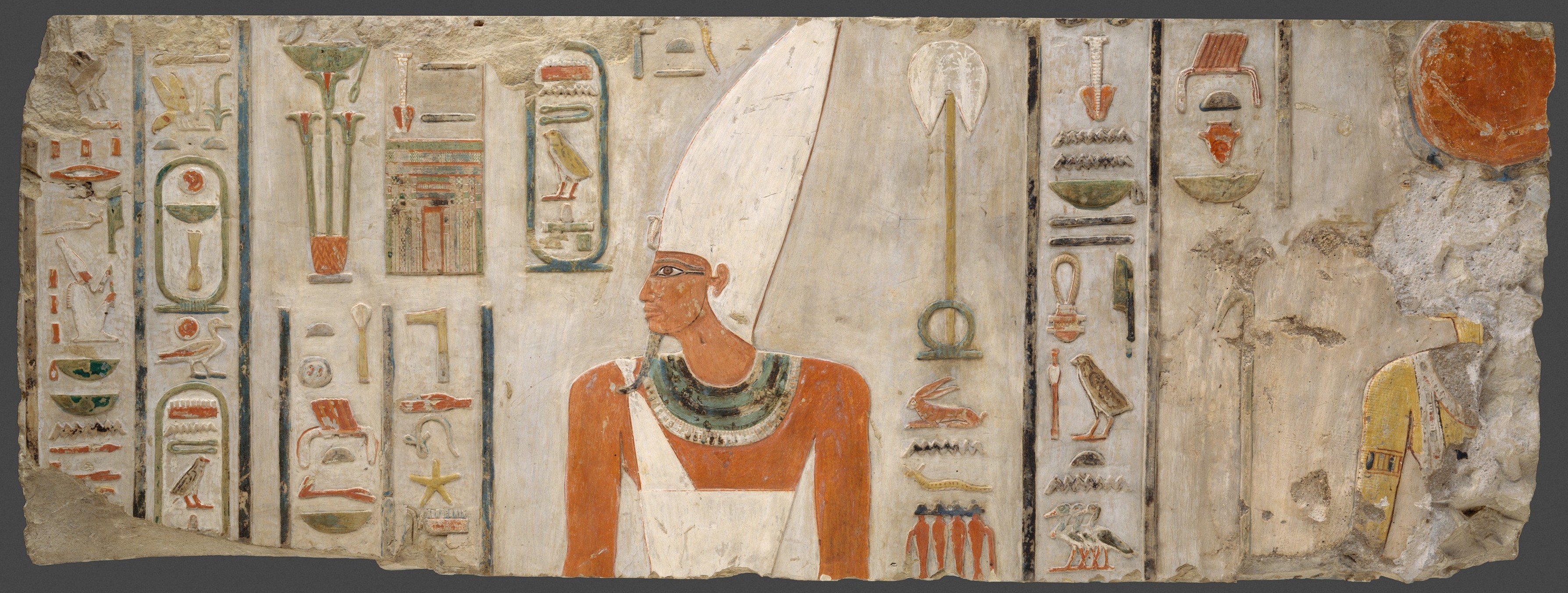|
Deir El-Bahri
Deir el-Bahari or Dayr al-Bahri (, , ) is a complex of mortuary temples and tombs located on the west bank of the Nile, opposite the city of Luxor, Egypt. This is a part of the Theban Necropolis. History Deir el-Bahari, located on the west bank of the Nile at Thebes, Egypt, Thebes (modern Luxor) is a complex of mortuary temples and tombs that has served as a major religious center for over two millennia. Its history begins with the 11th Dynasty when Pharaoh Mentuhotep II (c.2061-2010 BCE) constructed his funerary temple here to commemorate the reunification of Egypt after the First Intermediate Period. Mentuhotep's terraced complex, integrating a royal tomb into a temple platform, pioneered the cliffside temple style later emulated by New Kingdom rulers. Centuries later, the 18th Dynasty queen Hatshepsut erected her famous temple ''Djeser-Djeseru,'' designed by her architect Senenmut, directly beside Mentuhotep's complex. Richly decorated reliefs in Hatshepsut's temple celebr ... [...More Info...] [...Related Items...] OR: [Wikipedia] [Google] [Baidu] |
Luxor Governorate
Luxor () has been one of Egypt's governorates since 7 December 2009, when former president Hosni Mubarak announced its separation from the Qena Governorate.Luxor announced Egypt's 29th governorate , report of Daily News Egypt of 7 December 2009. It is located 635 km south of . It lies in along the . is the capital of the Lu ... [...More Info...] [...Related Items...] OR: [Wikipedia] [Google] [Baidu] |
Anubis
Anubis (; ), also known as Inpu, Inpw, Jnpw, or Anpu in Ancient Egyptian (), is the god of funerary rites, protector of graves, and guide to the underworld in ancient Egyptian religion, usually depicted as a canine or a man with a canine head. Like many ancient Egyptian deities, Anubis assumed different roles in various contexts. Depicted as a protector of graves as early as the First Dynasty (), Anubis was also an embalmer. By the Middle Kingdom (c. 2055–1650 BC) he was replaced by Osiris in his role as lord of the underworld. One of his prominent roles was as a god who ushered souls into the afterlife. He attended the weighing scale during the "Weighing of the Heart", in which it was determined whether a soul would be allowed to enter the realm of the dead. Anubis is one of the most frequently depicted and mentioned gods in the Egyptian pantheon; however, few major myths involved him. Anubis was depicted in black, a color that symbolized regeneration, life, the soil ... [...More Info...] [...Related Items...] OR: [Wikipedia] [Google] [Baidu] |
Ashayet
Ashayet or Ashait was an ancient Egyptian queen consort, a wife of Mentuhotep II in the 11th Dynasty. Her tomb (DBXI.17) and small decorated chapel were found in Mentuhotep II's Deir el-Bahari temple complex.Dodson, Aidan, Hilton, Dyan. The Complete Royal Families of Ancient Egypt. Thames & Hudson. (2004), p.87-88 The shrine and burial of Ashayet was found along with the tombs of four other women in their twenties, Henhenet, Kawit, Kemsit, Sadeh, and a young girl, Mayet. However, it is likely that there were three other additional shrines that were destroyed in the expansions of Mentuhotep II's burial complex. The nine shrines were built in the First Intermediate Period, prior to Mentuhotep II's reunification of Egypt. She and three other women of the six bore queenly titles, and most of them were Priestesses of Hathor. The location of their burial is significant to their titles as Priestesses of Hathor as the cliffs of Deir el-Bahri were sacred to Hathor from the Old Kingdom o ... [...More Info...] [...Related Items...] OR: [Wikipedia] [Google] [Baidu] |
Mastaba
A mastaba ( , or ), also mastabah or mastabat) is a type of ancient Egyptian tomb in the form of a flat-roofed, rectangular structure with inward sloping sides, constructed out of mudbricks or limestone. These edifices marked the burial sites of many eminent Egyptians during Egypt's Early Dynastic Period and Old Kingdom. Non-royal use of mastabas continued for over a thousand years. The word ''mastaba'' comes from the Arabic word (maṣṭaba) "stone bench". The Ancient Egyptian name was pr- Djt, meaning "house of stability", " house of eternity", or "eternal house". History The afterlife was centralized in the religion of ancient Egyptians. Their architecture reflects this, most prominently by the enormous amounts of time and labor involved in building tombs. Ancient Egyptians believed that the needs from the world of the living would be continued in the afterlife; it was therefore necessary to build tombs that would fulfill them, and be sturdy enough to last for an eter ... [...More Info...] [...Related Items...] OR: [Wikipedia] [Google] [Baidu] |
Senusret III
Khakaure Senusret III (also written as Senwosret III or the hellenised form, Sesostris III) was a pharaoh of Ancient Egypt, Egypt. He ruled from 1878 BC to 1839 BC during a time of great power and prosperity, and was the fifth king of the Twelfth dynasty of Egypt, Twelfth Dynasty of the Middle Kingdom of Egypt, Middle Kingdom. He was a great pharaoh of the Twelfth Dynasty and is considered to rule at the height of the Middle Kingdom. Consequently, he is regarded as one of the sources for the legend about Sesostris. His military campaigns gave rise to an era of peace and economic prosperity that reduced the power of nomarch, regional rulers and led to a revival in craftwork, trade, and urban development."''The Pyramids: Their Archeology and History''", Miroslav Verner, Translated by Steven Rendall, p386–387 & p416–421, Atlantic, Senusret III was among the few Egyptian kings who were deified and honored with a List of pharaohs deified during lifetime, cult during their own lifet ... [...More Info...] [...Related Items...] OR: [Wikipedia] [Google] [Baidu] |
Egyptian Mythology
Egyptian mythology is the collection of myths from ancient Egypt, which describe the actions of the Egyptian pantheon, Egyptian gods as a means of understanding the world around them. The beliefs that these myths express are an important part of ancient Egyptian religion. Myths appear frequently in Egyptian Ancient Egyptian literature, writings and Art of ancient Egypt, art, particularly in short stories and in religious material such as hymns, ritual texts, Ancient Egyptian funerary texts, funerary texts, and Egyptian temple, temple decoration. These sources rarely contain a complete account of a myth and often describe only brief fragments. Inspired by the cycles of nature, the Egyptians saw time in the present as a series of recurring patterns, whereas the earliest periods of time were linear. Myths are set in these earliest times, and myth sets the pattern for the cycles of the present. Present events repeat the events of myth, and in doing so renew ''maat'', the fundament ... [...More Info...] [...Related Items...] OR: [Wikipedia] [Google] [Baidu] |
Middle Kingdom Of Egypt
The Middle Kingdom of Egypt (also known as The Period of Reunification) is the period in the history of ancient Egypt following a period of political division known as the First Intermediate Period of Egypt, First Intermediate Period. The Middle Kingdom lasted from approximately 2040 to 1782 BC, stretching from the reunification of Egypt under the reign of Mentuhotep II in the Eleventh Dynasty of Egypt, Eleventh Dynasty to the end of the Twelfth Dynasty of Egypt, Twelfth Dynasty. The kings of the Eleventh Dynasty ruled from Thebes, Egypt, Thebes and the kings of the Twelfth Dynasty ruled from Lisht, el-Lisht. The Periodization of ancient Egypt, concept of the Middle Kingdom as one of three golden ages was coined in 1845 by German Egyptologist Christian Charles Josias von Bunsen, Baron von Bunsen, and its definition evolved significantly throughout the 19th and 20th centuries. Some scholars also include the Thirteenth Dynasty of Egypt wholly into this period, in which case the Mi ... [...More Info...] [...Related Items...] OR: [Wikipedia] [Google] [Baidu] |
Eleventh Dynasty Of Egypt
The Eleventh Dynasty of ancient Egypt (notated Dynasty XI; ) is a well-attested group of rulers. Its earlier members before Pharaoh Mentuhotep II are grouped with the four preceding dynasty, dynasties to form the First Intermediate Period, whereas the later members are considered part of the Middle Kingdom of Egypt, Middle Kingdom. They all ruled from Thebes (Egypt), Thebes in Upper Egypt. Characteristics The relative chronology of the 11th Dynasty is well established by contemporary attestations and, except for count Intef and Mentuhotep IV, by the Turin King List, Turin canon.mirror Manetho's statement that the 11th Dynasty consisted of 16 kings, who reigned for 43 years is contradicted by contemporary inscriptions and the evidence of the Turin King List, whose combined testimony establishes that this kingdom consisted of seven kings who ruled for a total of 143 years. However, his testimony that this dynasty was based at Thebes, Egypt, Thebes is verified by the contemporary ev ... [...More Info...] [...Related Items...] OR: [Wikipedia] [Google] [Baidu] |
Amun
Amun was a major ancient Egyptian deity who appears as a member of the Hermopolitan Ogdoad. Amun was attested from the Old Kingdom together with his wife Amunet. His oracle in Siwa Oasis, located in Western Egypt near the Libyan Desert, remained the only oracle of Amun throughout. With the 11th Dynasty ( BC), Amun rose to the position of patron deity of Thebes by replacing Montu. Initially possibly one of eight deities in the Hermapolite creation myth, his worship expanded. After the rebellion of Thebes against the Hyksos and with the rule of Ahmose I (16th century BC), Amun acquired national importance, expressed in his fusion with the Sun god, Ra, as Amun-Ra (alternatively spelled Amon-Ra or Amun-Re). On his own, he was also thought to be the king of the gods. Amun-Ra retained chief importance in the Egyptian pantheon throughout the New Kingdom (with the exception of the " Atenist heresy" under Akhenaten). Amun-Ra in this period (16th–11th centur ... [...More Info...] [...Related Items...] OR: [Wikipedia] [Google] [Baidu] |
Valley Of The Kings
The Valley of the Kings, also known as the Valley of the Gates of the Kings, is an area in Egypt where, for a period of nearly 500 years from the Eighteenth Dynasty to the Twentieth Dynasty, rock-cut tombs were excavated for pharaohs and powerful nobles under the New Kingdom of ancient Egypt. It is a wadi sitting on the west bank of the Nile, opposite Thebes (modern-day Luxor) and within the heart of the Theban Necropolis.Siliotti (1997), p. 13 There are two main sections: the East Valley, where the majority of the royal tombs are situated; and the West Valley, otherwise known as the Valley of the Monkeys. With the 2005 discovery of a new chamber and the 2008 discovery of two further tomb entrances, the Valley of the Kings is known to contain 65 tombs and chambers, ranging in size from the simple pit that is KV54 to the complex tomb that is KV5, which alone has over 120 chambers for the sons of Ramesses II. It was the principal burial place for the New Kingdom's major roya ... [...More Info...] [...Related Items...] OR: [Wikipedia] [Google] [Baidu] |
Meretseger
Meretseger (also known as Mersegrit' or Mertseger) was a Theban cobra-goddess in ancient Egyptian religion, in charge with guarding and protecting the vast Theban Necropolis — on the west bank of the Nile, in front of Thebes — and especially the heavily guarded Valley of the Kings.Hart 1986, pp. 119–120.Wilkinson 2003, p. 224. Her cult was typical of the New Kingdom of Egypt (1550–1070 BC).Hart 1986, p. 120. Role and characteristics Meretseger's name means "She Who Loves Silence",The British Museum Book of Ancient Egypt (2007), London: The British Museum Press. . p. 104. in reference to the silence of the desert cemetery area she kept or, according to another interpretation, "Beloved of Him Who Makes Silence (Osiris)".Ions 1973, pp. 116, 118. Meretseger was the patron of the artisans and workers of the village of Deir el-Medina, who built and decorated the great royal and noble tombs. Desecrations of rich royal burials were already in progress from the Old Kingdom o ... [...More Info...] [...Related Items...] OR: [Wikipedia] [Google] [Baidu] |






